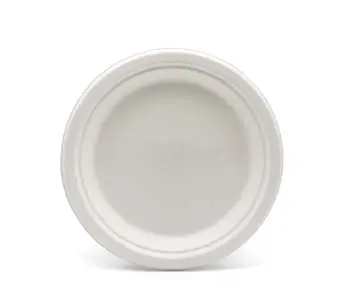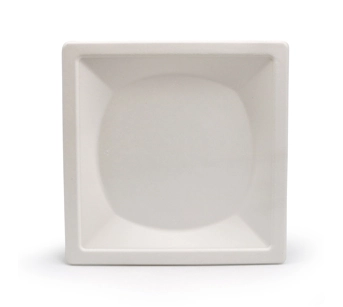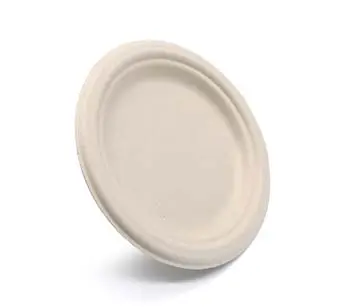Disposable bowls have become an integral part of our fast-paced modern lifestyle, providing convenience and ease in various settings such as picnics, parties, and take-out food services. However, the environmental cost associated with traditional disposable bowls made from plastics and styrofoam has reached an alarming level.
Fortunately, the emergence of eco-friendly disposable bowls offers a promising solution to this ecological problem. Eco-friendly disposable bowls are defined as single-use food containers that are made from sustainable materials and have a minimal impact on the environment throughout their lifecycle.
One popular option for eco-friendly disposable bowls is the use of biodegradable food bowls. These bowls are made from organic matter that can break down naturally over time, eliminating the need for long-term storage or specialized recycling processes. Additionally, biodegradable food bowls offer the convenience of a disposable option while still minimizing harm to the environment.
These bowls are designed to break down naturally without causing harm or leaving behind toxic residues. With the growing awareness about climate change and the need for sustainable practices in our everyday lives, eco-friendly alternatives to traditional disposable bowls have gained significant importance.
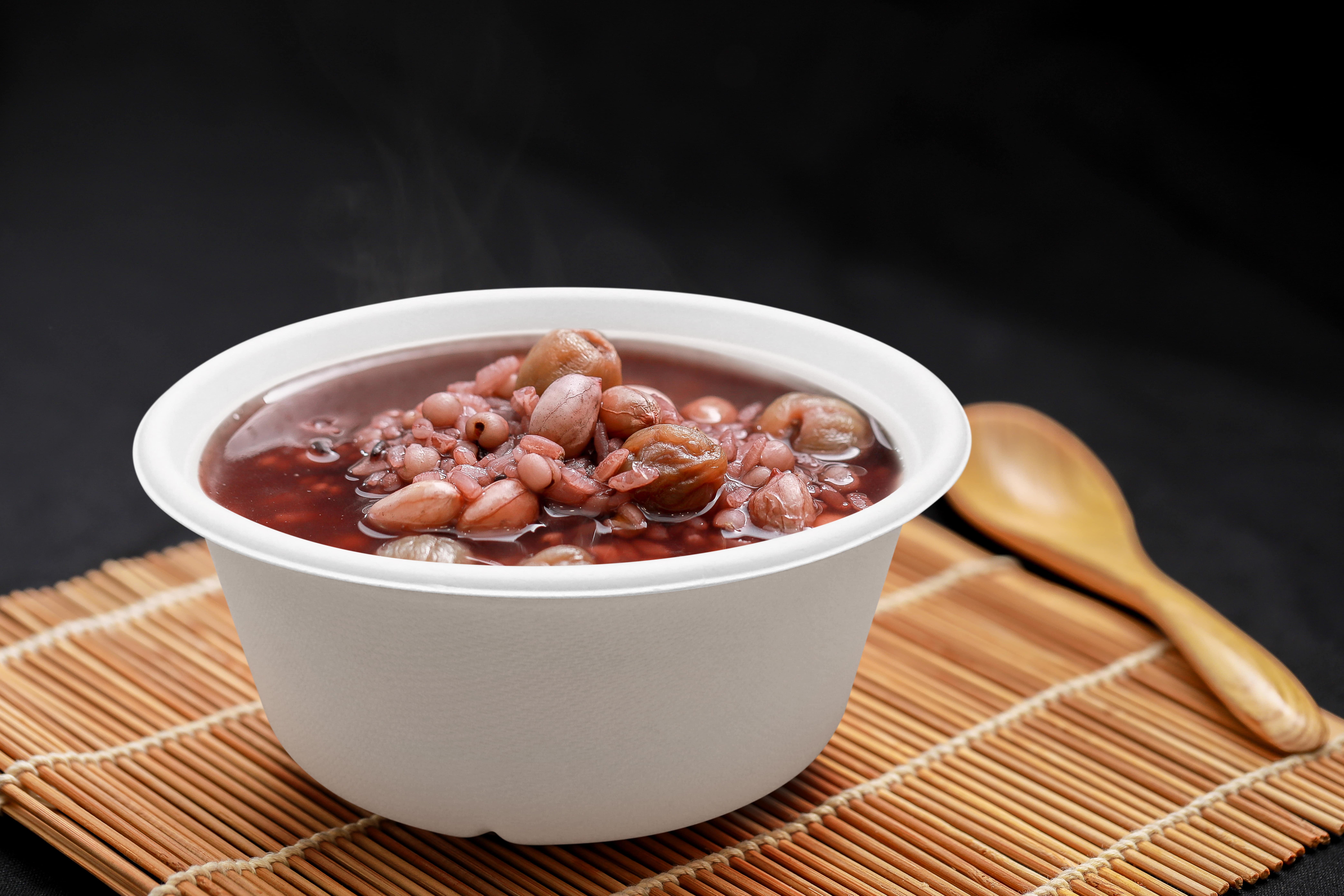
The Importance of Eco-Friendly Alternatives
Moving Beyond Convenience: A Call for Responsible Choices
The use of traditional disposable bowls has resulted in a staggering accumulation of plastic waste worldwide. According to recent statistics, approximately 300 million metric tons of plastic waste is generated annually, with a significant portion originating from single-use products like disposable bowls.
This plastic waste poses severe threats to our ecosystems by polluting water bodies, endangering marine life, and contributing to greenhouse gas emissions. Embracing eco-friendly alternatives to traditional disposable bowls is crucial for mitigating these environmental challenges.
By opting for eco-friendly options made from renewable materials like bamboo, sugarcane fiber (bagasse), or palm leaves, we can significantly reduce our reliance on non-biodegradable plastics and promote sustainable consumption practices. The innovative design and production processes employed by manufacturers ensure that these eco-friendly options maintain the desired functionality while minimizing adverse environmental impacts.
Overview of the Outline
Navigating the Path to Sustainability
To provide a comprehensive understanding of eco-friendly disposable bowls and their potential, this article will delve into various aspects. We will explore the benefits of using these bowls, including their contribution to plastic waste reduction and conservation of resources. Additionally, we will examine different types of eco-friendly bowl materials such as bamboo, sugarcane fiber (bagasse), and palm leaves, discussing their advantages and limitations in terms of sustainability.
Furthermore, we will uncover the eco-friendly bowl production process, shedding light on sustainable practices implemented by manufacturers to minimize environmental impacts during manufacturing. This article will offer insights into composting or recycling options for these eco-friendly disposable bowls to ensure their proper disposal after use.
To support the growing demand for eco-friendly disposable bowls, many biodegradable tableware companies are adopting sustainable production processes. These companies focus on minimizing waste, conserving energy, and using renewable resources to create environmentally friendly alternatives to traditional disposable bowls. By providing information on composting or recycling options, these companies aim to ensure that consumers can properly dispose of their eco-friendly disposable bowls and contribute to a circular economy.
Reduction in Plastic Waste
Statistics on Plastic Pollution and its Impact on the Environment
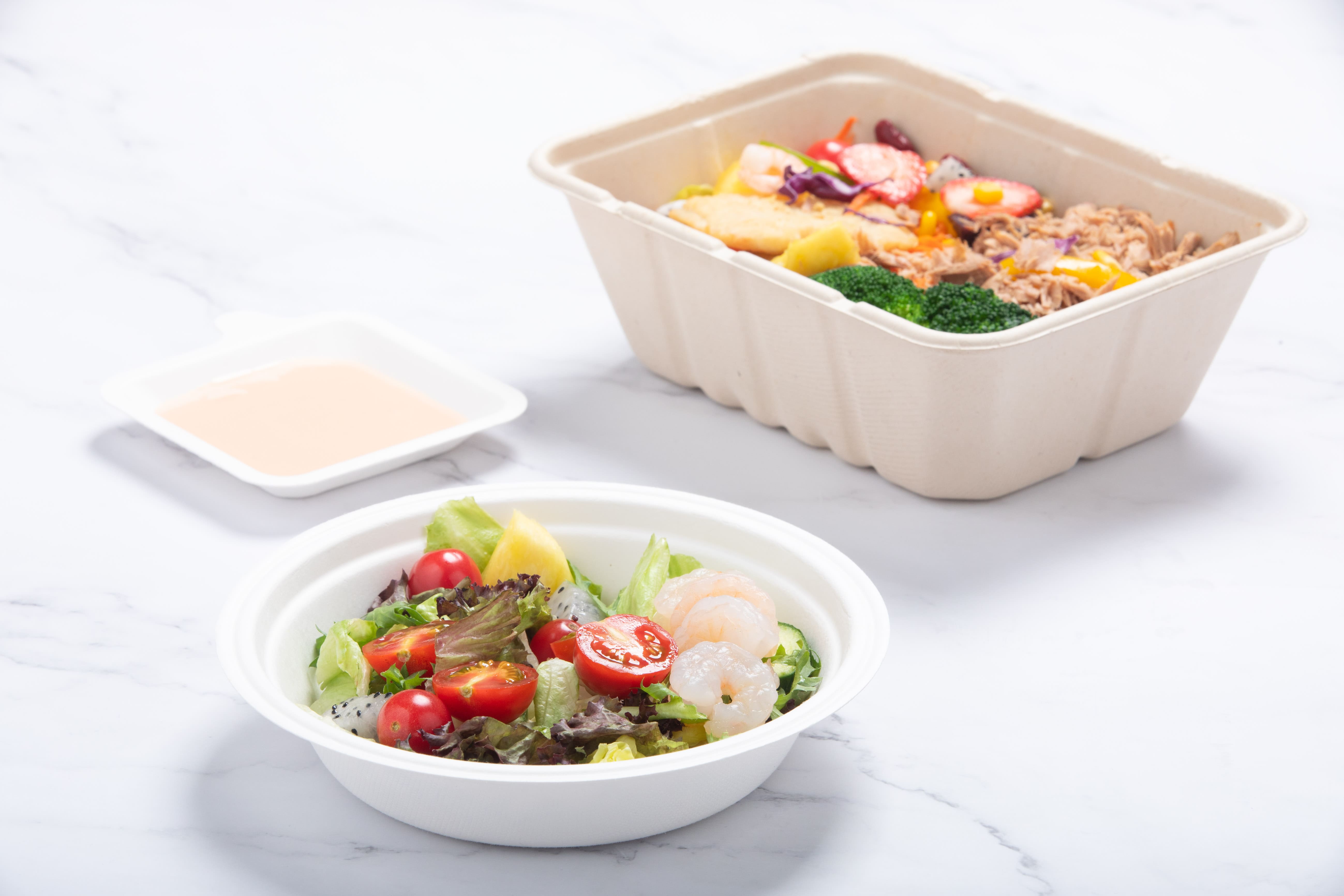
Plastic pollution has emerged as a global environmental crisis, with devastating consequences for our planet's ecosystems. According to recent studies, approximately 8 million metric tons of plastic end up in our oceans every year, wreaking havoc on marine life and disrupting delicate ecosystems.
These staggering numbers highlight the urgent need for alternatives to traditional disposable bowls, which contribute significantly to this plastic waste. One of the primary culprits is polystyrene (commonly known as Styrofoam), which is widely used for takeaway food containers, including bowls.
Polystyrene takes hundreds of years to decompose naturally, persisting in landfills and oceans indefinitely. Its lightweight nature also makes it prone to wind dispersal, leading to litter and microplastic contamination in various environments.
Comparison Between Traditional Disposable Bowls and Eco-Friendly Options
When comparing traditional disposable bowls with their eco-friendly counterparts, the contrast is stark regarding waste generation. Traditional bowls made from non-biodegradable materials like polystyrene or single-use plastics create an immense amount of waste that lingers for centuries in landfills or ends up polluting natural habitats.
On the other hand, eco-friendly disposable bowls utilize materials that are biodegradable and compostable. These include bamboo fiber, sugarcane bagasse, palm leafs, and other renewable resources.
Unlike traditional options that persist indefinitely in the environment once discarded, eco-friendly materials break down naturally over time without causing long-term harm. By opting for eco-friendly disposable bowls over their conventional counterparts, we can significantly reduce plastic waste accumulation and its detrimental impact on our fragile ecosystems.
Conservation of Resources
Discussion on the Use of Renewable Materials in Eco-Friendly Bowls
Eco-friendly disposable bowls embrace the use of renewable materials, such as bamboo, sugarcane bagasse, and palm leafs, which offer a sustainable alternative to conventional bowl production. Bamboo stands out as an exceptional choice due to its rapid growth rate and regenerative properties.
Biodegradable serving bowls are gaining popularity for their use of renewable materials, such as bamboo, sugarcane bagasse, and palm leaves. These materials not only provide a sustainable alternative to conventional bowl production but also offer unique properties such as strength, durability, and aesthetic appeal. As a result, biodegradable serving bowls not only minimize environmental impact but also enhance the dining experience for consumers.
It can be harvested within 3-5 years without requiring replanting, making it an abundant and renewable resource. Sugarcane bagasse is another viable option as it is a byproduct of the sugar manufacturing process.
Utilizing this waste material for bowl production not only reduces waste but also offers a practical solution for its utilization. Palm leaf bowls have gained popularity due to their sustainable sourcing methods.
These leaves are collected without causing harm to the trees, ensuring minimal ecological impact. By utilizing these renewable materials in eco-friendly bowl production, we can reduce our dependence on finite resources and mitigate the negative consequences associated with deforestation and habitat destruction.
Explanation of How These Materials are Sourced Sustainably
Sustainability lies at the core of eco-friendly disposable bowl production, emphasizing responsible sourcing practices that reduce environmental impact. The suppliers of renewable materials follow stringent guidelines to ensure sustainability throughout their supply chains. For instance, bamboo is carefully harvested in a way that allows for natural regeneration without damaging surrounding ecosystems or depleting soil nutrients.
Sustainable agricultural practices are employed during the cultivation of sugarcane, focusing on minimizing pesticide usage and promoting soil health. Similarly, when collecting palm leaves for bowl production, ethical harvesting methods are adopted to avoid harming trees or disrupting local flora and fauna.
By prioritizing sustainable sourcing processes for these renewable materials used in eco-friendly bowls, we can safeguard natural resources while offering consumers an environmentally conscious alternative to traditional disposable options. Incorporating these practices demonstrates our commitment towards reducing plastic waste accumulation and conserving resources for future generations.
Bamboo Bowls: Embracing Nature's Versatile Wonder
Bamboo, with its remarkable growth rate and abundance, has emerged as a versatile and renewable resource that holds tremendous potential for eco-friendly disposable bowl production. This fast-growing grass can reach maturity within a few years, making it an attractive alternative to traditional materials like plastic or paper. The use of bamboo for bowl production aligns with the principles of sustainability and environmental consciousness.
One of the key advantages of utilizing bamboo for bowl production is its inherent renewability. Bamboo can be harvested without causing any harm to the plant's root system, allowing it to quickly regenerate and continue growing.
This sustainable harvesting method ensures a continuous supply while minimizing ecological impact. Additionally, bamboo possesses impressive strength and durability properties, making it an ideal material for creating sturdy disposable bowls that can withstand daily use.
However, there are limitations associated with using bamboo as well. While it is a fast-growing plant, its growth rate varies depending on the species and environmental conditions.
Thus, consistent availability may be a concern in some regions. Furthermore, processing raw bamboo into usable bowl forms requires specialized equipment and techniques to ensure proper sterilization and finishing.
Sugarcane Fiber (Bagasse) Bowls: Unleashing the Power of Byproducts
Sugarcane fiber bowls, also known as bagasse bowls, present an innovative solution that harnesses the byproduct from sugarcane processing. Bagasse refers to the fibrous residue left after extracting juice from sugarcane stalks.
Traditionally considered waste material, bagasse now finds purpose in manufacturing eco-friendly disposable bowls. By utilizing bagasse in bowl production instead of letting it go to waste or incineration processes emitting greenhouse gases, we unlock numerous benefits on multiple fronts.
First and foremost is the reduction of waste generated by the sugar industry. By repurposing this abundant byproduct, we minimize landfill use and decrease the environmental burden associated with its disposal.
Bagasse bowls offer several advantages. They are biodegradable, compostable, and have excellent insulation properties, making them suitable for both hot and cold food items.
Moreover, bagasse bowls exhibit robustness and can withstand liquids without compromising their structural integrity. However, it is worth noting that prolonged exposure to moisture may cause bagasse to lose its strength over time.
Palm Leaf Bowls: Nature's Elegant Offering
Palm leaf bowls are a remarkable example of innovation in eco-friendly disposable bowl production. These bowls are crafted from naturally shed Areca palm leaves collected without harming the trees themselves, promoting sustainability while preserving natural habitats.
The process of creating palm leaf bowls involves collecting fallen palm leaves that would naturally decompose on the forest floor. These leaves undergo an intricate cleaning and shaping process that converts them into elegant disposable bowls ready for use.
By utilizing these leaves that would otherwise go to waste, we minimize environmental impact while embracing nature's inherent beauty. The advantages of using palm leaf bowls extend beyond their eco-friendliness.
These bowls exhibit natural variations in color and texture due to their organic origin, adding a touch of uniqueness to each piece. Additionally, they possess impressive heat resistance properties, making them ideal for serving piping hot food without causing any harm or leaving behind harmful chemicals.
Eco-Friendly Bowl Production Process
_Bowls.jpg)
Explanation on how sustainable practices are implemented during the manufacturing process
When it comes to producing eco-friendly disposable bowls, manufacturers have embraced sustainable practices throughout the production process. One key aspect is the sourcing of raw materials. Ethical suppliers ensure that materials like bamboo, sugarcane fiber (bagasse), or palm leaves are acquired from responsibly managed plantations or farms.
By prioritizing sustainable sourcing, manufacturers minimize deforestation and habitat destruction, helping to preserve our ecosystems. In addition to responsible sourcing, eco-friendly bowl production involves using non-toxic and water-based adhesives instead of harmful chemicals.
These adhesives are free from volatile organic compounds (VOCs) that can be detrimental to both human health and the environment. Furthermore, many manufacturers have adopted water-based inks for printing designs on their bowls, reducing the use of hazardous solvents commonly found in traditional printing methods.
Discussion on energy-efficient methods used to produce eco-friendly disposable bowls
Energy efficiency plays a crucial role in the production of eco-friendly disposable bowls. Manufacturers strive to minimize their carbon footprint by implementing various energy-saving measures throughout their operations.
One such method is investing in modern machinery equipped with advanced technologies designed for energy conservation. These machines optimize resource utilization by reducing power consumption during manufacturing processes such as molding and shaping.
Moreover, some manufacturers have embraced renewable energy sources as an alternative to conventional power grids. By utilizing solar panels or wind turbines, they can generate clean electricity required for running their production lines.
This shift towards renewable energy not only reduces greenhouse gas emissions but also showcases a commitment towards sustainability. To further enhance energy efficiency, manufacturers may implement strategies like waste heat recovery systems that capture and repurpose excess thermal energy generated during various manufacturing stages.
This recycled heat can then be utilized for other purposes within the facility or even redirected back into the production process, minimizing overall energy consumption. By prioritizing sustainable practices and energy-efficient methods, the production of eco-friendly disposable bowls ensures that environmental impacts are minimized while still meeting the demands of consumers seeking more sustainable options.
Composting or Recycling Options for Eco-Friendly Disposable Bowls
The Cycle of Sustainability: Disposing of Eco-Friendly Bowls
When it comes to the end of their lifecycle, eco-friendly disposable bowls offer various environmentally friendly disposal options. Two common methods include composting and recycling. In both cases, these options ensure that the materials used in the production of these bowls return to the earth without causing harm or adding to pollution.
Guidelines for Composting Different Types of Eco-Friendly Bowls
Composting is an excellent option for eco-friendly disposable bowls made from materials such as bamboo, sugarcane fiber (bagasse), or palm leafs. These materials are biodegradable and break down naturally, making them suitable for composting processes. To compost bamboo bowls, it is essential to remove any plastic or metal components if present before placing them in a compost pile or bin.
Biodegradable serving bowls made from bamboo, sugarcane fiber (bagasse), or palm leaves can be easily composted, contributing to nutrient-rich soil for gardening and farming purposes. By following proper composting guidelines and removing non-compostable components, individuals can ensure a seamless and environmentally friendly disposal method for their biodegradable serving bowls.
Bamboo takes around six months to a year to fully decompose, depending on environmental conditions. Sugarcane fiber (bagasse) bowls can also be composted.
However, it is advisable to shred them into smaller pieces before adding them to the compost bin. This will help accelerate decomposition by increasing surface area exposure and aiding microbial breakdown.
Within three months, bagasse bowls should break down completely under ideal composting conditions. Similarly, palm leaf bowls can be added to a compost pile after they have been used.
The leaves are rich in nutrients and will contribute positively to your compost heap's composition. Depending on various factors such as temperature and moisture levels, palm leafs can decompose within three months to a year.
Conclusion
As we navigate towards a more sustainable future, eco-friendly disposable bowls play an important role in reducing plastic waste and conserving natural resources. By embracing alternatives like bamboo, sugarcane fiber (bagasse), and palm leaf bowls, we can actively contribute to the preservation of our environment. The composting and recycling options for these eco-friendly bowls ensure that they can complete their lifecycle in an environmentally responsible manner.
Composting enables the return of these materials to the earth, enriching the soil and supporting plant growth. Recycling, on the other hand, allows for their transformation into new products, reducing the demand for virgin materials.
By adopting eco-friendly disposable bowls and properly disposing of them through composting or recycling, we can make a tangible difference in reducing waste and protecting our planet's precious resources. Let us embrace these sustainable alternatives with enthusiasm and optimism as we work together towards a greener future.


